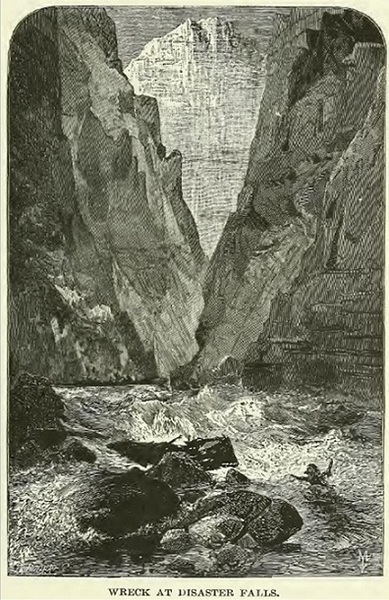Dublin Core
Title
Description
More than 140 years ago, on August 30, 1869, six men in two wooden boats emerged into open country from the high cliffs and rough waters of the Grand Canyon. They were “blackened, bearded, emaciated, in rags,” and down to their last stash of mouldy flour. They were lucky to be alive.
Three months earlier, Major John Wesley Powell and his crew of nine men had put in to the Green River in Wyoming with gear and supplies sufficient for ten months. The aim of the expedition was to explore and map the canyons of the Green and Colorado Rivers, which ran through the heart of Utah and the last uncharted lands in the continental United States. This was not a government expedition, but the personal passion of Major Powell, a one-armed Civil War veteran from Illinois, and geology professor inspired by the promise of scientific discovery.
Powell knew the trip would be dangerous, for rumours and Indian reports told of inaccessible canyons and raging water. He estimated the route to be 300 miles long, but instead, found the river ran more than 1000 miles through a chain of majestic red rock canyons up to 6000 feet deep, and was as “uncrossable and unrunnable as advertised.”
The party found trouble early on, with rapids taking one boat and most of their supplies. Fearful of losing their remaining food, not to mention their lives, they portaged where possible, but were forced to run many of the worst rapids. Unknown hazards loomed around every bend, and the crew grew impatient with Powell’s scientific research. “We surely will all die if we continue on this journey,” they worried, but could not convince Powell to abandon the river. Ultimately deserted by four of his crew, Powell’s scientific instruments were all lost or broken, and his initial focus on scientific precision eventually turned to basic survival.
Powell did survive the first recorded run down the Colorado River and returned two years later to do it again. His surveys were crucial to the scientific study and opening of the region following the Civil War.
Creator
Megan van Frank for the Utah Humanities © 2010
Source
Image: Wreck at Disaster Falls, engraving, John Wesley Powell, Report on the Exploration of the Colorado River of the West and Its Tributaries, Smithsonian, 1875. Powell and his crew lost one of their boats - the No Name - along with valuable supplies and equipment early on in their voyage.
_______________
See John Wesley Powell (with an introduction by Wallace Stegner), The Exploration of the Colorado River and its Canyons, New York: Penguin, 1987. Originally published as John Wesley Powell, The Exploration of the Colorado River of the West and its Tributaries, Washington: Government Printing Office, 1875.
Publisher
The Beehive Archive is a production of the Utah Humanities. Find sources and the whole collection of past episodes at www.utahhumanities.org
Date
2010-08-27

